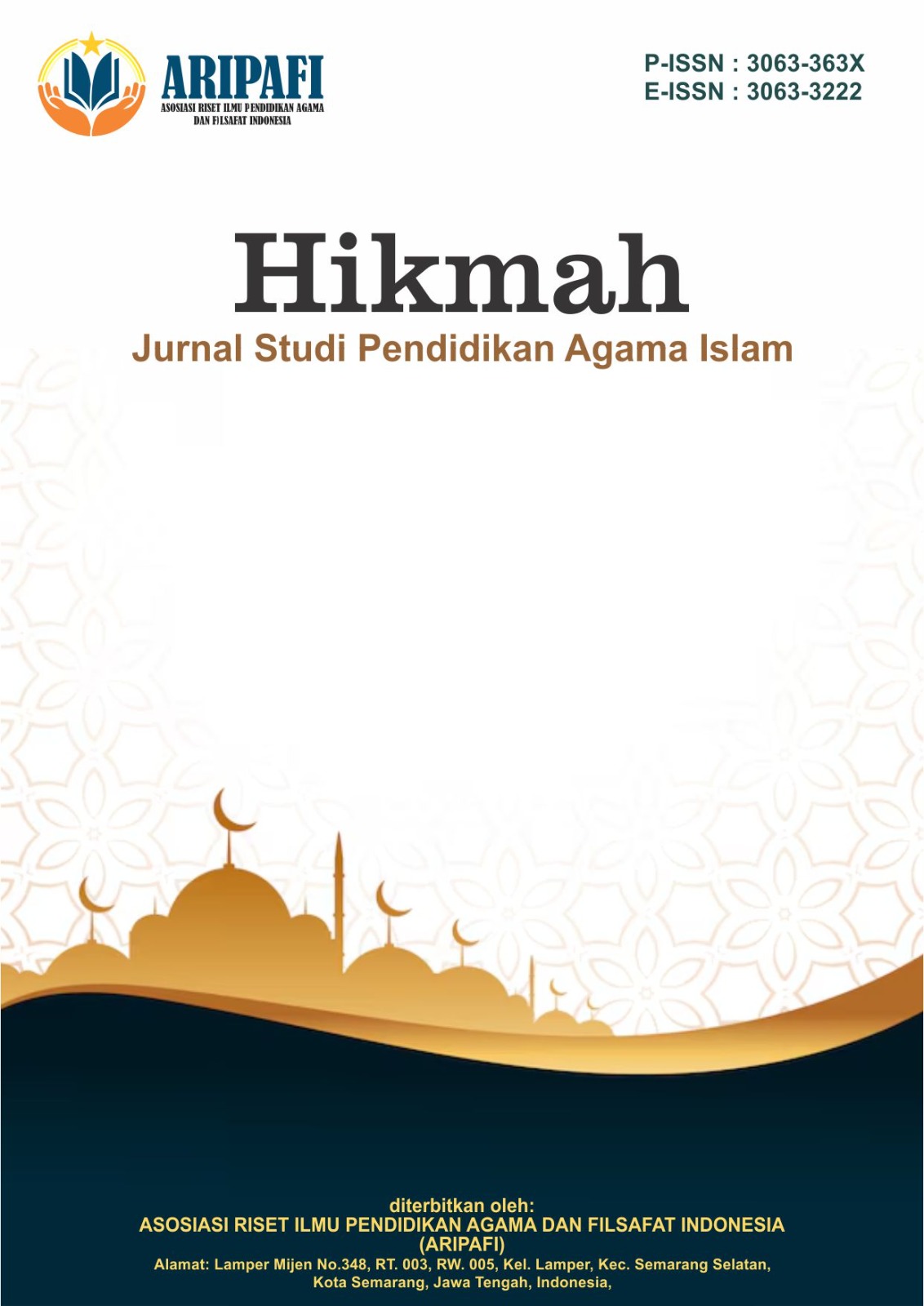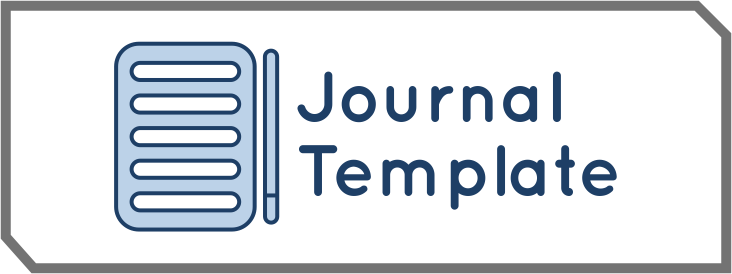Analisis Implementasi Program Takhassus dalam Pembelajaran Kitab Kuning di Pesantren Tebuireng
DOI:
https://doi.org/10.61132/hikmah.v2i2.851Keywords:
Implementation, Learning, Takhassus Program, Tebuireng Islamic Boarding School, Yellow BookAbstract
Learning the yellow book as a legacy of classical Islamic knowledge is still an important tradition in the world of Islamic boarding schools. In the midst of the development of the era and the challenges of understanding classical Arabic, Tebuireng Islamic Boarding School applies the Takhassus method as a special approach to deepen the ability of students to understand the texts of the yellow book. This study specifically focuses on 1. How is the Takhassus program in learning the yellow book at the Tebuireng Islamic Boarding School? 2. How is the Analysis of the Implementation of the Takhassus Method in Learning the Yellow Book? 3. What are the Inhibiting and Supporting Factors of the Takhassus Method in Learning the Yellow Book? The method used is qualitative research with a field study type. Data collection techniques were carried out through in-depth interviews, direct observation, and documentation of ongoing learning activities. The main informants consisted of teachers and students who were directly involved in the Takhassus program. The results of the study showed that the implementation of the Takhassus program involved a participant selection process, intensive learning scheduling, and a grammar-based learning approach (nahwu and sharaf) and translation. This program was able to improve students' ability to read and understand the book in depth. However, there were several obstacles such as time constraints, variations in students' initial abilities, and the need to improve the quality of teaching staff. In conclusion, the Takhassus program is an effective strategy in improving the quality of yellow book learning in Islamic boarding schools, as long as it is supported by good teaching management and a sustainable program.
References
Agustin, Z. N., & Masruroh, L. (2023). Improving understanding of the kitab kuning study through a takhassus program at Nurul Ilmi wal Fikri Pesantren-Tebuireng-Jombang. [Nama jurnal jika ada, ditambahkan].
Ahyat, N. (2017). Program pembelajaran pendidikan agama Islam. [Informasi penerbit atau jurnal tidak tersedia].
Ali, M. (n.d.). Kamus lengkap Bahasa Indonesia. Jakarta: Pustaka Ilmu.
Anhar, M. K. (2021). Program takhassus sebagai upaya meningkatkan kemampuan adaptasi santri baru di Asrama Al Falah Pondok Pesantren Darussalam Blokagung Banyuwangi Tahun. [Skripsi atau tesis, institusi ditambahkan bila tersedia].
As-Subki, T. D. A. W. I. A. (771 H). Jam'ul Jawami' fi Usulil Fiqh. Damaskus: Nairab.
Bashori, B., Novebri, N., & Salabi, A. S. (2022). Budaya pesantren: Pengembangan pembelajaran turats. Al Mabhats: Jurnal Penelitian Sosial Agama, 7(1).
Bashori. (2022). Budaya pesantren: Pengembangan kajian turats. Al Mabhats: Jurnal Penelitian Sosial Agama, 7(1).
Din, T. W. ’A. (1997). Perguruan tinggi pesantren: Pendidikan alternatif masa depan. Jakarta: Gema Insani Press.
Firdaus, M. U., & Nuriyah, K. (2023). Implementasi Kitab Nubdzatul Bayan dalam pembelajaran Nahwu dan Shorrof bagi pemula. [Nama jurnal tidak disebutkan].
Hamid, A. (1978). Sistem pesantren madrasah dan pesantren di Sulawesi Selatan. Ujung Pandang: Fakultas Sastra UNHAS.
Mahmud. (2019). Sistem pembelajaran di Pondok Pesantren Al-Aziziyah: Analisis terapan program dalam kegiatan pembelajaran formal dan nonformal. Jurnal Pendidikan Mandala, 4(5).
Mahrisa, R., Masrur, M., & Sofyan, A. (2020). Pesantren dan sejarah perkembangannya di Indonesia. Jurnal Ilmiah Abdi Ilmu, 13(2).
Masruroh, M., & Tamam, B. (2024). Manajemen kurikulum program takhassus di Pondok Pesantren Abu Daimana Sumber Papan II Larangan Badung Palengaan Pamekasan. Ahsana Media: Jurnal Pemikiran, Pendidikan dan Penelitian Ke-Islaman, 10(2).
McDavid, J. C., & Hawthorn, L. R. L. (2006). Program evaluation and performance measurement: An introduction to practice. Thousand Oaks: Sage Publications.
Moleong, L. J. (2008). Metodologi penelitian kualitatif. Bandung: Remaja Rosdakarya.
Nasir, M. R. (2005). Mencari tipologi format pendidikan ideal: Pondok pesantren di tengah arus perubahan. Yogyakarta: Pustaka Pelajar.
Rasyid, M. Z., et al. (2020). Pesantren dan pengelolaannya. Pamekasan: Duta Media Publishing.
Shiddiq, A. S. (2015). Tradisi akademik pesantren. Tadris: Jurnal Pendidikan Islam.
Sugiyono. (2013). Metode penelitian kuantitatif, kualitatif, dan R&D. Bandung: Alfabeta.
Sugiyono. (2022). Metode penelitian kualitatif. Bandung: Alfabeta.
Usman, I. M. (2013). Pesantren sebagai lembaga pendidikan Islam. Jurnal Al-Hikmah, 14(1).
Wahjoetimo. (1997). Perguruan tinggi pesantren: Pendidikan alternatif masa depan. Jakarta: Gema Insani Press.
Yasmadi. (2002). Modernisasi pesantren: Kritik Nurcholish Madjid terhadap pendidikan Islam tradisional. Jakarta: Ciputat Press.






